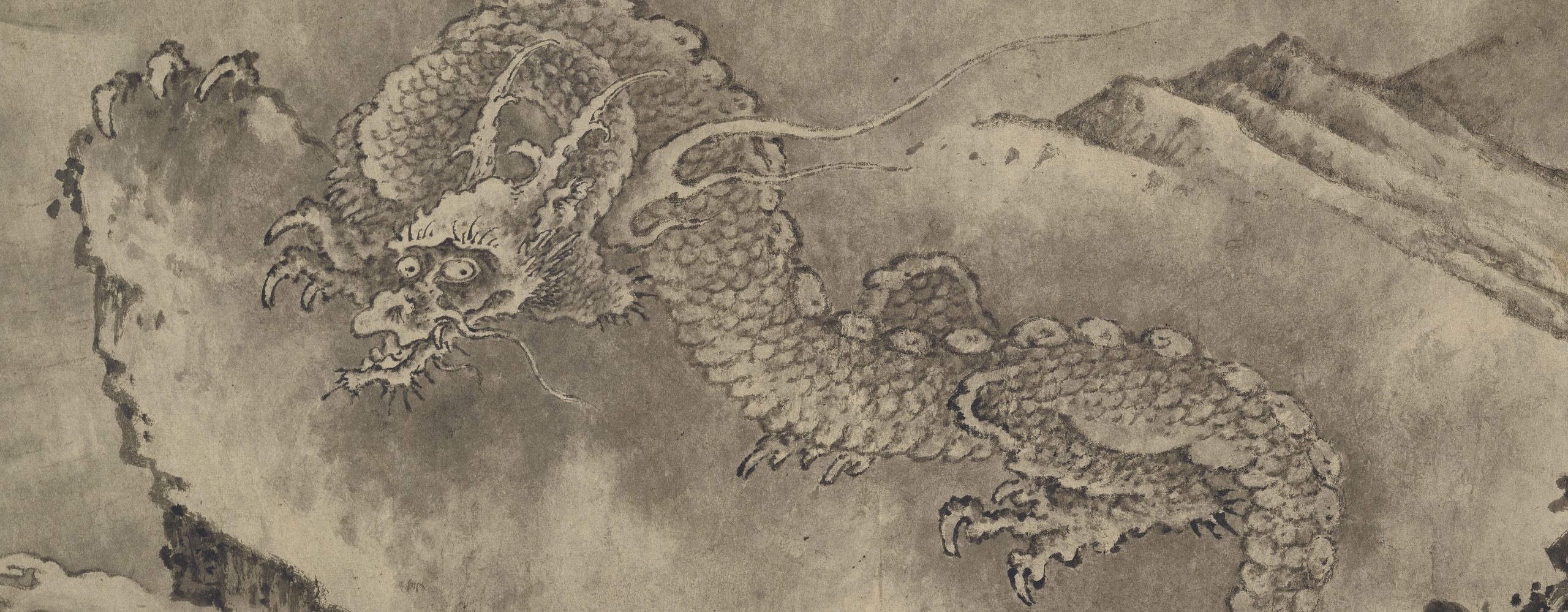This handscroll is more than sixteen feet long. It vividly portrays eleven dragons. They are dancing on high cliffs, whirling through dense clouds, and dashing in and out of waves. As they roll their eyes, flex their claws, and open their mouths to roar, the whole universe seems to be instilled with their immense powers. The dragons are depicted as a combination of the horns of a deer, head of an ox, eyes of a ghost, mouth of a donkey, beard of a catfish, mane of a lion, scales of a carp, claws of an eagle, and body of a serpent. The painting is executed with monochromean artwork developed or executed in black and white or in varying tones of only one color. ink. The artist skillfully integrates random splashes of ink with painstaking fine line drawings.
Images of dragons in Chinese art were depicted as early as the Neolithic period (ca. 7000–1700 BCE). The symbolism of the earliest dragons on jade and bronzea mixture of copper, tin, and often lead that produces a strong metal. objects is still a mystery. However, by the Han dynastya series of rulers from a single family. (206 BCE–220 CE), dragons were believed to be water creatures that reside in rivers and oceans. They are divine rulers of moving water. They can fly into clouds to control the weather and bring life-giving rain. Dragons are also symbolsshapes or designs that are recognizable and have a meaning associated with them of masculine power and imperialrelating to an empire, an emperor, or the home of royals. majesty. In Chinese artworks, dragons are often depicted as chasing or catching a flaming pearl, representing wisdom and enlightenmenta moment of great wisdom and understanding; the highest level of consciousness, believed to be achieved through meditation and adhering to the basic moral teaching of Buddhism.. Dragons have been so popular throughout Chinese art and culture that the Chinese consider themselves “descendants of the dragon.”
The scroll was painted by an anonymous Ming dynastya series of rulers from a single family. (1368–1644) artist. He included a separate remark at the end of the painting, which described the movement of the dragons and praised their strength and power. Collectors’ seals appear at the beginning and end of the painting and after the remark as well. The writings and seals help us understand the background of the painting and the history of its circulation.
- Examine all available images for this scroll and use the zoom feature. Can you identify all the different animals that compose a dragon?
- Compare and contrast the body features of Chinese dragons with dragons in European art.
- Research Chinese legends that feature dragons, and compare and contrast these legends with European legends that have dragons.







